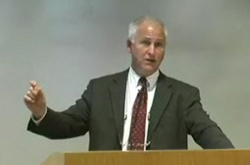So, What's the Payoff?
It took decades to resolve. Did New Jersey's decades-long school finance case actually help students?
In its path-breaking Abbott v. Burke decision in 1990, the New Jersey Supreme Court laid the groundwork for providing extra state resources to 32 poor, urban school districts, in an effort to give students in economically challenged districts the same educational advantages as those in wealthier areas.
Last May, following two decades of legal wrangling and legislative tinkering, the court allowed New Jersey to phase out the Abbott designation, saying that, except for special cases like preschool and construction funding, poorer districts no longer needed the state’s help in providing educational resources equal to those provided by wealthier communities.
As plaintiffs in states around the country have sought to increase funding to comply with state constitutional guarantees to provide equal educational opportunities for all students, the Abbott case remains the most complex in the wave of adequacy lawsuits that have swept the nation over the past three decades.
In light of these recent developments, four legal and education specialists convened at a TC forum on November 11, to assess how successful the Abbott districts have been in providing equitable educational opportunities, as well as to discuss what the future holds for them as they lose their special-funding status. Sponsored by The Campaign for Educational Equity at Teachers College, the panel was introduced by Michael Rebell, TCCE’s founding Executive Director and the lead attorney for plaintiffs in an important educational equity lawsuit in New York
The first speaker, David Sciarra, Executive Director of the Education Law Center , the legal watchdog for the Abbott districts, noted that New Jersey
According to Sciarra, the gap in state math test scores between fourth graders in Abbott districts and non-Abbott districts narrowed from 31 points in 1999 to 19 points in 2007, and on state reading tests from 22 points in 2001 to 15 points in 2007. Success in eighth grade was more modest, narrowing from 30 points in 2000 for math in 2000 to 26 points in 2007, and staying at 20 points for reading during the same years. Although the achievement gap has not narrowed in high schools, New Jersey
“The truth is, we have started to make some real progress,” Sciarra said. “When people ask, ‘What did Abbott do?’ I say, we still have a long way to go, but the answer is, a heck of a lot.”
In contrast, Gordon MacInnes, a Fellow at the Century Foundation who oversaw implementation of the Abbott decision as Assistant Commissioner at the New Jersey Department of Education from 2002 to 2007, delivered a more mixed assessment, calling the gap in “life chances” between poor and middle-class and wealthy students in New Jersey and across the nation “still substantial.”
MacInnes elaborated, “When you get to middle school, eighth grade, high school—forget about it. This has been a huge failure.”
Arguably the most important judicial decision in education since Brown v. Board of Education, Abbott has resulted in some meaningful changes in individual school districts for certain groups, including the improvement of free, high-quality preschools for three- and four-year olds, MacInnes said. And some Abbott districts such as Union City
Providing the panel with a fresh perspective was Clifford Janey, who signed on as Superintendent of Schools in Newark Newark was that it set a funding formula, giving Newark
But funding formulas and new programs will not solve the problems of poor students unless there are policies in place that support them, according to Janey.
“Education reform,” he said, “has to do with the graduating class and each step toward the graduating class and how we are all accountable.”
To view the forum sponsored by The Campaign for Educational Equity, visit http://teacherscollege.blip.tv/file/2856585/
Published Monday, Jan. 11, 2010


